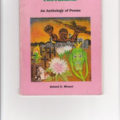The title of the poem suggests happiness at the attainment of independence in 1980. In 1980, Zimbabwe attained her independence from her former colonial Master Britain. The celebrations were staged at Rufaro Stadium in Mbare, Harare. Rufaro Stadium is thus a symbolic name that stands for the heavy celebrations that followed the attainment of independence in 1980.
Stanza 2 says even the enemy was there defeated but planning to frustrate. It shows as Zimbabweans, we need to be watchful of the machinations of the former colonial master. The word ‘frustrate’ tells the former colonial master was not happy with our attainment of independence.
Stanza three mocks the former colonial master. It says the jack (the name of the British flag-Union Jack)was jeered (laughed at or mocked) .lt was heavy with fat and blood of the sons and daughters of Zimbabwe who died in the liberation struggle. Fat symbolizes the wealth of the country and blood stands for the dead who lost their lives during the liberation struggle. The image of the Jack being lowered down from the flagpole like a punctured tick is a simile meant to express the defeat and humiliation of the whites. A tick is a parasite that survives on blood. The sight of it being punctured is cause for celebration. The mood is celebratory. The tick in this instance symbolizes the British, the former colonial master full of blood of the freedom fighters.
Stanza 4 refers to the presence of the Prince, a royal figure who represents the British crown or Monarchy. He was present to concede (accept) defeat and to take the Jack or British flag to its home. The home is the British island situated in the West where the sun sets. The direction of the island, where the sun sets symbolizes the end or defeat of the former colonial master.
Stanza 5 explains the essence or importance of the Zimbabwe ruins. Ruins in this case symbolize Zimbabwe as a country. At last, the ‘Zimbabwe bird on the ruins breaks free from stone as wing responded to wind’. This statement suggests that the bird which symbolizes Zimbabwe is at last free from bondage or colonialism. This is seen as the Zimbabwe flag is hoisted and flies in response to the blowing wind signalling a new era of independence in the country.
The last stanza captures a celebratory mood where the persona is part of the jubilation and happiness whistling and ululating with others on the dawn of a new era symbolized by the new Zimbabwean flag. The lost and the living were united in a Great Zimbabwe.
The poem generally points to the happiness that came with the attainment of independence. It however suggests that the former colonial master was not happy with our attainment of independence
Even today the former colonial master is attempting to derail our hard fought independence. Therefore, we need to be wary of the enemy.



Latest Comments